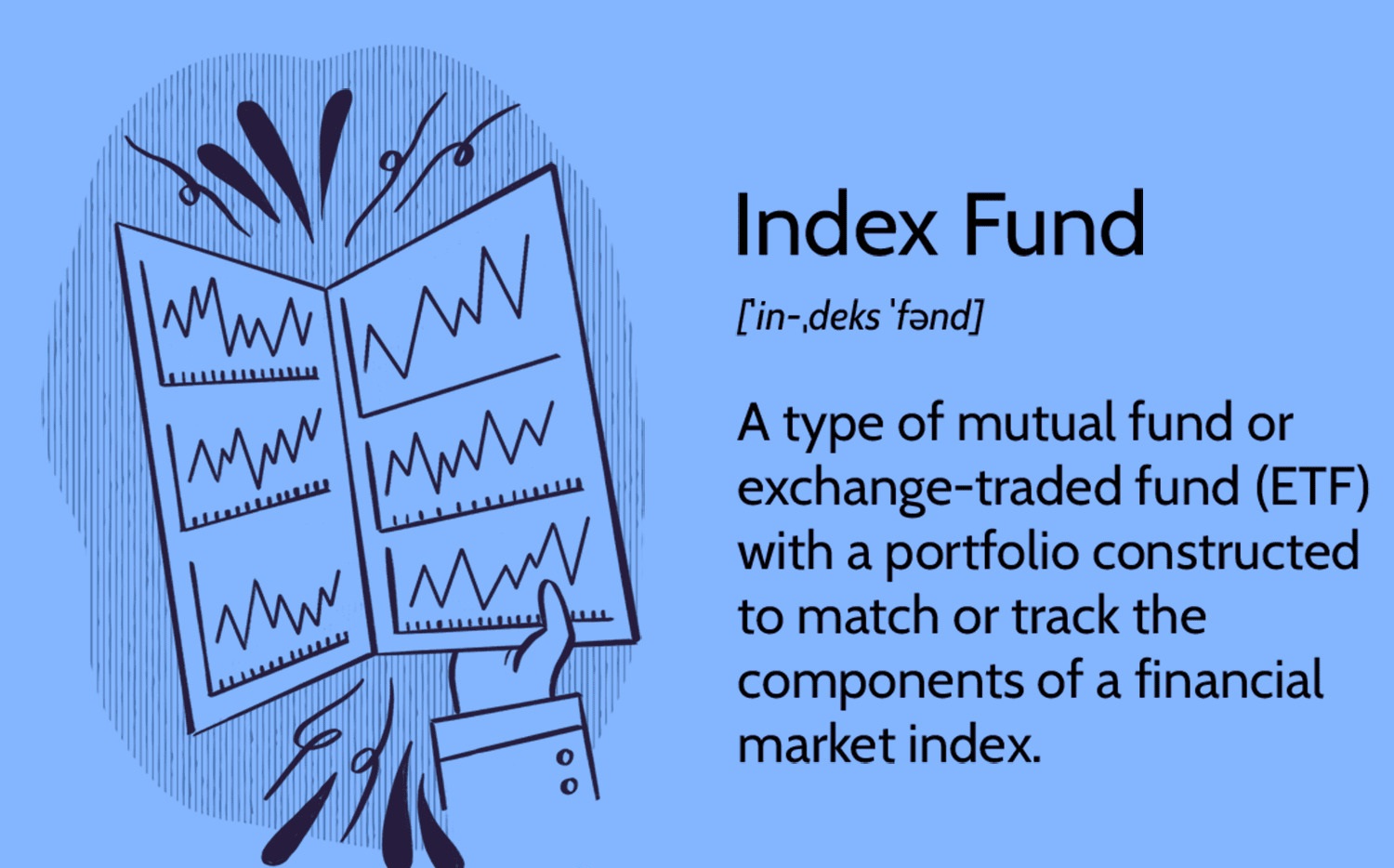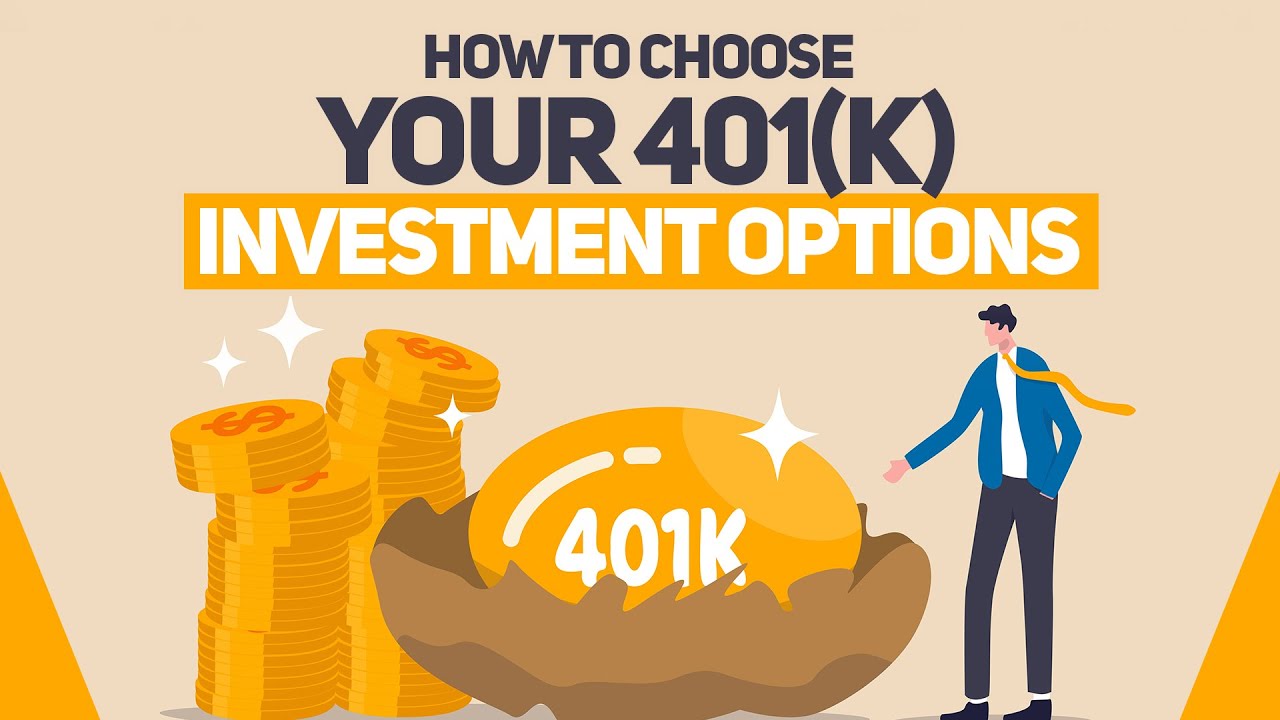Stocks
Stocks are one of the most common types of investments found in passively managed index funds. When you invest in stocks, you are essentially buying shares of ownership in a company. As a shareholder, you have the potential to profit if the company’s value increases over time.
Stocks can be categorized into different types based on the size, growth potential, and valuation of the companies. Some common types of stocks include:
- Large Cap Stocks: These are stocks of companies with a large market capitalization, usually over $10 billion. Large cap stocks are typically considered more stable and less volatile compared to smaller companies.
- Small Cap Stocks: These are stocks of companies with a smaller market capitalization, usually below $2 billion. Small cap stocks have the potential for higher growth, but they can also be more volatile and carry more risk.
- Growth Stocks: Growth stocks are stocks of companies that are expected to grow at an above-average rate compared to the overall market. These companies reinvest their profits to expand their operations and increase their market share.
- Value Stocks: Value stocks are stocks of companies that are considered undervalued by the market. Investors believe that the company’s true worth is higher than its current stock price, and therefore, the stock has potential for appreciation.
Investing in stocks through passively managed index funds offers diversification across a broad range of companies. The funds aim to track a specific stock market index, such as the S&P 500, which represents a large portion of the overall stock market. By investing in a stock index fund, investors can benefit from the average performance of the companies in that index.
It’s important to note that stocks can be subject to market fluctuations and economic conditions, which can affect their prices. Therefore, it’s crucial for investors to approach stock investments with a long-term perspective and a well-diversified portfolio to mitigate risk.
Bonds
Bonds are another type of investment commonly found in passively managed index funds. Unlike stocks that represent ownership in a company, bonds are debt instruments issued by governments, municipalities, or corporations to raise capital. When you invest in bonds, you essentially lend money to the issuer in exchange for regular interest payments and the return of the principal amount at maturity.
There are several types of bonds available in the market, including:
- Treasury Securities: These are bonds issued by the U.S. Department of the Treasury to finance the government’s operations. Treasury bonds, notes, and bills offer low-risk options for investors, with varying maturities.
- Government Agency Securities: These bonds are issued by government-sponsored entities such as Fannie Mae and Freddie Mac. They provide a way for these entities to raise funds for specific purposes, like supporting the housing market.
- Corporate Bonds: These bonds are issued by corporations to raise capital for various business needs. Corporate bonds can offer higher interest rates compared to government bonds but carry a higher level of risk.
- Municipal Bonds: Municipal bonds are issued by state and local governments to finance public projects such as infrastructure development or school construction. They can provide tax advantages for investors, as the interest on municipal bonds is often exempt from federal income taxes.
Investing in bonds can provide a source of income for investors, as they regularly pay interest throughout the bond’s term. Bond investments are typically considered lower in risk compared to stocks, as they offer a fixed income stream and the return of the initial investment at maturity.
Passively managed bond index funds aim to replicate the performance of a specific bond market index, such as the Bloomberg Barclays U.S. Aggregate Bond Index. By investing in a bond index fund, investors can gain exposure to a diversified portfolio of bonds across different sectors and maturities.
It’s important to consider factors such as interest rate movements, credit ratings, and the issuer’s financial health when investing in bonds. While bonds are generally considered less volatile than stocks, their prices can still be influenced by market conditions, inflation expectations, and changes in interest rates.
Commodities
Commodities are another type of investment that can be found in passively managed index funds. Commodities refer to raw materials or primary agricultural products that are used in the production of goods and services. Investors can gain exposure to various commodities through futures contracts, exchange-traded funds (ETFs), or commodity index funds.
Some common types of commodities that can be included in passively managed index funds are:
- Energy: Energy commodities include oil, natural gas, and coal. These commodities play a vital role in powering industries and transportation.
- Agricultural: Agricultural commodities consist of crops such as wheat, corn, soybeans, and cotton. These commodities reflect supply and demand dynamics influenced by factors such as weather conditions, global crop yields, and government policies.
- Metals: Metals commodities include gold, silver, copper, and platinum. These commodities are widely used in industrial processes, jewelry, and investment in financial markets.
- Livestock: Livestock commodities include cattle, hogs, and poultry. These commodities reflect demand from the meat industry and can be affected by factors such as disease outbreaks and consumption trends.
Passively managed commodity index funds aim to track the performance of a specific commodity index, such as the S&P GSCI (Goldman Sachs Commodity Index) or the Bloomberg Commodity Index. By investing in a commodity index fund, investors can gain exposure to a diversified portfolio of commodities without the need to directly invest in individual commodities or manage futures contracts.
Investing in commodities can provide benefits such as portfolio diversification and potential protection against inflation. These assets often exhibit low correlation with traditional stocks and bonds, which can help reduce overall portfolio volatility.
However, it’s important to note that commodities can be subject to price volatility and other market risks. Factors such as supply and demand imbalances, geopolitical events, weather conditions, and global economic trends can have a significant impact on commodity prices.
Before investing in commodities through passively managed index funds, it’s crucial to carefully consider your risk tolerance, investment goals, and the role commodities play in a well-diversified investment portfolio.
Real Estate Investment Trusts (REITs)
Real Estate Investment Trusts, or REITs, are investment vehicles that allow individuals to invest in real estate without having to directly own and manage properties. REITs are typically found in passively managed index funds and provide investors the opportunity to gain exposure to a diversified portfolio of real estate assets.
REITs own and operate income-generating properties such as apartment buildings, office spaces, shopping malls, hotels, and industrial facilities. By investing in REITs, individuals can benefit from the rental income and potential capital appreciation of these properties.
There are different types of REITs available, including:
- Equity REITs: These REITs own and operate income-generating properties. The rental income generated from these properties is distributed to investors in the form of dividends.
- Mortgage REITs: Mortgage REITs invest in real estate mortgages and generate income from the interest payments on those mortgages. These REITs are more focused on the lending side of real estate investments.
- Hybrid REITs: Hybrid REITs combine elements of both equity and mortgage REITs, investing in both properties and real estate loans.
Passively managed index funds that include REITs aim to track the performance of a specific real estate index, such as the FTSE Nareit All Equity REITs Index. By investing in a REIT index fund, investors can gain exposure to a diversified portfolio of real estate assets across different sectors and regions.
Investing in REITs offers several benefits. First, it provides individuals with a way to invest in real estate without the need for large capital or property management expertise. Second, REITs offer liquidity since they can be bought and sold on stock exchanges. Additionally, REITs may provide regular dividends, making them attractive for income-focused investors.
It’s important to note that investing in REITs does come with some risks. Real estate markets can be subject to fluctuations in property prices, interest rates, and economic conditions. Additionally, individual REITs may have specific risks related to their property holdings or management practices. Therefore, investors should carefully assess the performance history, diversification, and risk factors associated with any REIT before investing.
Exchange-Traded Funds (ETFs)
Exchange-Traded Funds, or ETFs, are investment funds that are traded on stock exchanges, similar to individual stocks. ETFs are commonly found in passively managed index funds and offer investors exposure to a diversified portfolio of assets, such as stocks, bonds, commodities, or a combination of different asset classes.
ETFs are designed to track the performance of a specific index, such as the S&P 500 or the NASDAQ-100. By investing in an ETF, individuals can gain exposure to a broad range of securities that make up the underlying index.
There are several benefits of investing in ETFs:
- Diversification: ETFs typically hold a basket of securities, which helps spread risk across different companies or asset classes. This diversification can help reduce the impact of individual investments on the overall portfolio.
- Liquidity: ETFs can be bought and sold throughout the trading day on stock exchanges, providing investors with the ability to enter or exit positions quickly and at market prices.
- Cost-efficiency: ETFs often have lower expense ratios compared to actively managed funds since they aim to replicate the performance of an index rather than relying on active management strategies.
- Transparency: ETFs disclose their holdings on a daily basis, allowing investors to know exactly what securities they own. This transparency enables investors to make informed decisions about their investments.
Passively managed index funds that include ETFs provide investors with a cost-effective way to gain exposure to a diversified portfolio of securities. Investors can choose from a variety of ETFs depending on their investment objectives and risk tolerance.
It’s important to note that while ETFs provide diversification and flexibility, they are still subject to market risks. The performance of an ETF will be influenced by the underlying securities in the index it tracks. Factors such as market volatility, economic conditions, and specific events impacting the market can affect the value of the ETF.
Before investing in ETFs, individuals should consider their investment goals, risk tolerance, and the specific characteristics of the ETF they are interested in. It’s also advisable to review the expense ratio, tracking error, and historical performance of the ETF to make an informed investment decision.
Mutual Funds
Mutual funds are investment vehicles that pool money from multiple investors to invest in a diversified portfolio of securities, such as stocks, bonds, or a combination of both. Mutual funds are commonly found in passively managed index funds, providing individuals with a way to access a broad range of investments with the guidance of professional fund managers.
When investing in mutual funds, individuals purchase shares of the fund, and the value of those shares is based on the net asset value (NAV) of the fund, which is calculated daily. The NAV represents the total value of the fund’s assets minus any liabilities, divided by the number of outstanding shares.
There are different types of mutual funds available, including:
- Equity Funds: Equity funds primarily invest in stocks, aiming for capital appreciation over the long term. These funds may focus on specific sectors or market caps, such as large-cap or small-cap stocks.
- Bond Funds: Bond funds invest in fixed-income securities, such as government bonds, corporate bonds, or municipal bonds. These funds offer regular income through interest payments.
- Money Market Funds: Money market funds invest in short-term, low-risk securities, such as Treasury bills and commercial paper. These funds aim to preserve capital and provide liquidity.
- Index Funds: Index funds are mutual funds designed to replicate the performance of a specific market index, such as the S&P 500. These funds offer broad market exposure and tend to have lower fees compared to actively managed funds.
Mutual funds provide several benefits for investors:
- Professional Management: Mutual funds are managed by professional fund managers who analyze and make investment decisions on behalf of the investors.
- Diversification: Mutual funds hold a variety of securities, which helps spread risk across different investments.
- Liquidity: Investors can buy or sell mutual fund shares on any business day at the fund’s NAV, providing liquidity compared to other types of investments.
- Flexibility: Mutual funds offer a range of investment options, allowing individuals to choose funds that align with their investment goals, time horizon, and risk tolerance.
It’s important to consider the expenses associated with mutual funds, such as management fees and other administrative costs. These expenses can impact the overall return of the investment. Individuals should also carefully review the fund’s prospectus, which provides important information about the fund’s investment objective, strategy, risks, and performance history.
By investing in mutual funds within passively managed index funds, individuals can benefit from the diversification and professional management that mutual funds offer, while also gaining exposure to a broader market or specific index.
Treasury Securities
Treasury securities are debt instruments issued by the U.S. Department of the Treasury to finance the government’s operations. These securities are considered one of the safest investments available because they are backed by the full faith and credit of the U.S. government.
There are several types of Treasury securities:
- Treasury Bills (T-Bills): T-Bills are short-term securities with maturities of one year or less. They are sold at a discount to their face value and investors earn the difference between the purchase price and the face value at maturity.
- Treasury Notes: Treasury Notes have maturities ranging from 2 to 10 years. They pay interest to investors every six months until maturity when the principal is repaid.
- Treasury Bonds: Treasury Bonds have maturities of 10 to 30 years. Similar to Treasury Notes, they pay interest every six months, but they have longer terms.
- Treasury Inflation-Protected Securities (TIPS): TIPS are designed to protect investors from inflation. The principal value of these securities adjusts with changes in the Consumer Price Index (CPI), providing a hedge against rising prices.
Treasury securities are known for their low risk, as they are backed by the U.S. government. They serve as a benchmark for the pricing of other debt securities and are considered a safe haven investment during periods of uncertainty.
Investors can purchase Treasury securities directly from the U.S. Department of the Treasury or indirectly through brokerages, banks, or mutual funds. Treasury securities are also included in passively managed index funds, such as Treasury bond index funds, which aim to replicate the performance of a specific Treasury bond index.
Investing in Treasury securities offers several advantages:
- Safety: Treasury securities are considered one of the safest investments because of their backing by the U.S. government.
- Liquidity: Treasury securities are highly liquid, allowing investors to buy or sell them at any time in the secondary market.
- Income: Treasury securities provide a steady stream of income through regular interest payments, making them attractive for income-focused investors.
- Diversification: Including Treasury securities in an investment portfolio can help diversify risk and balance the overall portfolio.
However, it’s important to note that Treasury securities are not without risks. One significant risk is interest rate risk, as changes in interest rates can affect the value of these securities. Moreover, inflation can erode the purchasing power of fixed-rate Treasury securities.
Before investing in Treasury securities or Treasury bond index funds, individuals should carefully assess their investment goals, risk tolerance, and the role these securities will play in their overall portfolio.
Government Agency Securities
Government agency securities are debt instruments issued by government-sponsored entities (GSEs) that operate as independent corporations, but with implicit or explicit backing from the U.S. government. These securities are commonly found in passively managed index funds and offer investors opportunities to invest in different sectors of the economy.
Government agency securities are issued by entities such as Fannie Mae, Freddie Mac, and the Federal Home Loan Banks. These entities play a critical role in supporting the housing market by providing liquidity to lenders, which helps to increase the availability and affordability of mortgage loans.
There are several types of government agency securities:
- Mortgage-Backed Securities (MBS): MBS are securities that represent an ownership interest in a pool of mortgage loans. They provide income to investors through the interest and principal payments made by borrowers on the underlying mortgages.
- Debt Securities: GSEs issue debt securities, such as notes and bonds, to raise capital for their operations. These securities pay interest to investors at regular intervals until maturity, when the principal amount is repaid.
- Asset-Backed Securities (ABS): ABS are securities that are backed by a pool of financial assets, such as auto loans, credit card receivables, or student loans. These securities provide investors with exposure to a diversified portfolio of underlying assets.
Government agency securities are considered to have a relatively low risk compared to other fixed-income securities, although they are not backed by the full faith and credit of the U.S. government. The implied or explicit guarantee from the government adds an extra layer of security to these securities.
Investing in government agency securities through passively managed index funds offers diversification across different sectors of the economy, as these securities represent various aspects of the housing market and other lending activities. This allows investors to benefit from the performance of a broader range of assets.
It’s important to note that government agency securities, like any investment, are subject to risks. Factors such as changes in interest rates, economic conditions, and the financial stability of the issuing entities can impact the value and performance of these securities.
Before investing in government agency securities or government agency bond index funds, individuals should carefully evaluate their investment objectives, risk tolerance, and the specific characteristics of the securities or funds they are considering.
Corporate Bonds
Corporate bonds are debt securities issued by corporations to raise capital for various purposes, such as funding operations, expanding business activities, or acquiring assets. These bonds are commonly found in passively managed index funds and offer investors the opportunity to invest in a diverse range of corporate debt instruments.
When purchasing corporate bonds, investors effectively lend money to the issuing corporation in exchange for regular interest payments and the return of the principal amount at maturity. The interest rates on corporate bonds are typically higher than those of government bonds to compensate investors for the additional risk associated with corporate debt.
Corporate bonds can be categorized based on their credit ratings:
- Investment-Grade Bonds: These bonds are issued by corporations with a solid credit history and a low risk of default. They are assigned higher credit ratings, such as AAA, AA, A, or BBB, by credit rating agencies.
- High-Yield Bonds: Also known as junk bonds, high-yield bonds are issued by corporations with lower credit ratings and a higher risk of default. These bonds offer higher yields to compensate investors for the increased risk.
Investing in corporate bonds offers several potential benefits:
- Regular Income: Corporate bonds provide investors with a predictable stream of income through periodic interest payments.
- Diversification: By including corporate bonds in a portfolio, investors can diversify their fixed-income investments, reducing exposure to any single company or sector.
- Potential for Capital Appreciation: If interest rates decline or the creditworthiness of the issuer improves, the market value of corporate bonds may rise, providing capital appreciation.
Passively managed index funds that include corporate bonds aim to replicate the performance of a specific corporate bond index, such as the Bloomberg Barclays U.S. Corporate Bond Index. By investing in a corporate bond index fund, investors can gain exposure to a diversified portfolio of corporate bonds across different industries and credit ratings.
It’s important to consider the risks associated with corporate bonds. Factors such as changes in interest rates, economic conditions, and the financial health of the issuing corporation can impact the value and performance of these bonds. Higher-yielding bonds, in particular, may carry a higher risk of default and price volatility.
Before investing in corporate bonds or corporate bond index funds, individuals should carefully assess their investment goals, risk tolerance, and the specific characteristics of the bonds or funds they are considering.
Municipal Bonds
Municipal bonds, also known as munis, are debt securities issued by state and local governments, as well as their agencies and municipalities, to finance public projects such as infrastructure development, schools, hospitals, and utilities. These bonds are commonly found in passively managed index funds and offer investors the opportunity to invest in government-backed debt instruments at the local level.
When individuals invest in municipal bonds, they lend money to the issuing government entity in exchange for regular interest payments and the return of the principal amount at maturity. Municipal bonds are considered relatively low-risk investments due to the ability of the government entities to generate revenue through taxes and other sources to repay bondholders.
There are two main types of municipal bonds:
- General Obligation (GO) Bonds: These bonds are backed by the full faith and credit of the issuing government entity. Repayment is secured through the taxing power of the government, and issuers generally have the authority to increase taxes if necessary.
- Revenue Bonds: Revenue bonds are backed by the revenue generated from specific projects or entities, such as toll roads, water and sewer systems, or airports. Repayment of these bonds is secured by the income generated by the project.
Investing in municipal bonds offers several advantages for investors:
- Income Tax Advantages: Interest income from most municipal bonds is exempt from federal income taxes. Additionally, if the bonds are issued by the investor’s state or municipality, they may be exempt from state and local income taxes as well.
- Potential Stability: Municipal bonds are generally considered stable investments due to the reliable revenue streams that support them and the lower default risk compared to corporate bonds.
- Diversification: Including municipal bonds in a portfolio allows investors to diversify their fixed-income investments and reduce exposure to other types of bonds.
Passively managed index funds that include municipal bonds aim to replicate the performance of a specific municipal bond index, such as the Bloomberg Barclays Municipal Bond Index. By investing in a municipal bond index fund, investors can gain exposure to a diversified portfolio of municipal bonds from various states and municipalities.
It’s important to note that municipal bonds are not entirely risk-free. Factors such as changes in interest rates, credit ratings, and the financial health of the issuing government entity can impact the value and performance of these bonds. Additionally, some municipal bonds may carry higher risks, especially those issued by less financially stable municipalities or for riskier projects.
Before investing in municipal bonds or municipal bond index funds, individuals should carefully assess their investment goals, risk tolerance, and the specific characteristics of the bonds or funds they are considering.
International Stocks and Bonds
Investing in international stocks and bonds involves purchasing securities issued by companies or governments outside of one’s own country. This type of investment is commonly found in passively managed index funds and offers individuals the opportunity to diversify their portfolios and potentially benefit from global economic growth.
International stocks and bonds can provide exposure to a wide range of companies and countries, allowing investors to participate in different sectors and economies. International investing can be done through various methods, including direct purchases of individual securities or by investing in international index funds.
Investing in international stocks offers several potential benefits:
- Diversification: Adding international stocks to a portfolio provides exposure to different markets, sectors, and currencies, reducing reliance on a single country’s economy.
- Global Growth Opportunities: International stocks allow investors to tap into markets experiencing robust economic growth and potential investment opportunities not available in their home country.
- Hedging Against Currency Risk: Investment in international stocks can provide a natural hedge against currency risk, as changes in foreign currency values can impact the value of international investments.
Similarly, investing in international bonds can offer various advantages:
- Diversification: Including international bonds in a portfolio can help diversify fixed-income exposures beyond domestic markets and provide access to different interest rate environments.
- Income Generation: International bonds can offer attractive yields and income streams, potentially providing higher returns compared to domestic bonds.
- Opportunity for Capital Appreciation: As interest rates and economic conditions vary across countries, international bonds may generate capital appreciation potential based on changes in credit ratings, economic growth, and interest rate differentials.
Passively managed index funds that include international stocks and bonds aim to track the performance of specific international indexes, such as the MSCI World Index or the Bloomberg Barclays Global Aggregate Bond Index. By investing in these funds, individuals can gain exposure to a diversified portfolio of international securities and benefit from the average performance of those markets or sectors.
Investing in international stocks and bonds is not without risks. Factors such as political instability, economic conditions, currency fluctuations, regulatory changes, and differing accounting standards can impact the performance of these securities. It’s essential for investors to consider these risks along with their investment goals, risk tolerance, and the specific characteristics of the international stocks or bonds they are considering for investment.
Small Cap Stocks
Small cap stocks are stocks of companies with relatively small market capitalizations. These companies have a total value, or market cap, that falls within a lower range compared to larger companies. Small cap stocks are commonly found in passively managed index funds and offer investors the opportunity to potentially benefit from the growth and development of smaller, emerging companies.
Small cap stocks are known for their potential for growth and can often provide opportunities for investors to discover undervalued companies with significant growth prospects. These companies may be in the early stages of their development or operating in niche markets that have robust potential for expansion.
Investing in small cap stocks offers several potential benefits:
- Growth Potential: Small cap stocks have the potential for higher growth rates compared to larger, more established companies. These companies often have room to expand and innovate, which can lead to significant capital appreciation.
- Market Inefficiencies: Due to their smaller size, small cap stocks may not always receive the same level of attention from investors and analysts. This can result in market inefficiencies and opportunities for astute investors to discover underpriced stocks.
- Diversification: Including small cap stocks in a portfolio provides diversification across different market segments and helps reduce reliance on larger companies.
However, it’s important to note that investing in small cap stocks also carries risks:
- Higher Volatility: Small cap stocks tend to be more volatile than larger, more established companies. Their share prices can experience significant fluctuations due to company-specific factors, market sentiment, or economic conditions.
- Liquidity: Small cap stocks may have lower trading volumes compared to larger stocks, which can result in wider bid-ask spreads and potential challenges when buying or selling shares.
- Higher Risk of Failure: Smaller companies face a higher risk of business failure compared to larger, well-established companies. This risk is inherent in their early-stage development or niche market operations.
Passively managed index funds that include small cap stocks aim to track the performance of a specific small cap stock index, such as the Russell 2000 or the S&P SmallCap 600. By investing in small cap stock index funds, individuals can gain exposure to a diversified portfolio of small cap companies across various sectors.
Before investing in small cap stocks or small cap stock index funds, it’s important for individuals to carefully assess their investment goals, risk tolerance, and the specific characteristics of the small cap stocks or funds they are considering. Conducting thorough research and diversifying investments can help minimize risk and potentially enhance returns.
Large Cap Stocks
Large cap stocks are stocks of companies with large market capitalizations. These companies have a substantial total value, or market cap, typically exceeding $10 billion. Large cap stocks are commonly found in passively managed index funds and offer investors the opportunity to potentially benefit from the stability and established presence of well-established companies.
Large cap stocks are often considered the blue-chip companies of the stock market. They are usually leaders in their respective industries, with a long history of success and a track record of generating steady profits. These companies are often household names, widely recognized by investors and consumers alike.
Investing in large cap stocks offers several potential benefits:
- Stability: Large cap stocks are typically more stable compared to smaller, growth-oriented companies. They are often well-established companies with diversified revenue streams and proven business models.
- Dividends: Many large cap companies are known for their ability to pay regular dividends to shareholders. These dividends provide a reliable income stream for investors.
- Liquidity: Large cap stocks generally have high trading volumes, making it easier for investors to buy and sell shares without significantly impacting the stock price.
Despite their stability, large cap stocks are not immune to risks:
- Market Volatility: While large cap stocks are generally considered less volatile than smaller stocks, they can still be influenced by overall market trends, economic conditions, or company-specific factors.
- Slower Growth: Large cap companies may have already experienced significant growth and may have more limited growth potential compared to smaller, high-growth companies.
Passively managed index funds that include large cap stocks aim to track the performance of a specific large cap stock index, such as the S&P 500 or the Dow Jones Industrial Average. By investing in large cap stock index funds, individuals can gain exposure to a diversified portfolio of large cap companies across various sectors.
Before investing in large cap stocks or large cap stock index funds, it’s important to carefully assess investment goals, risk tolerance, and the specific characteristics of the large cap stocks or funds in consideration. Diversifying investments across different market segments and conducting thorough research can help investors make informed decisions and potentially achieve their financial objectives.
Growth Stocks
Growth stocks are stocks of companies that exhibit strong potential for above-average growth in earnings, revenue, and share price. These companies are commonly found in passively managed index funds and offer investors the opportunity to potentially benefit from the rapid expansion and success of innovative and disruptive companies.
Growth stocks are characterized by their ability to generate substantial revenue growth and reinvest their profits into expanding their operations, launching new products, or entering new markets. These companies often operate in industries with significant growth prospects, such as technology, healthcare, or renewable energy.
Investing in growth stocks offers several potential benefits:
- Capital Appreciation: Growth stocks have the potential to deliver significant capital appreciation over the long term as they continue to expand and succeed in their respective industries.
- Future Potential: Growth companies often focus on disruptive technologies or innovative business models, positioning themselves at the forefront of future industry trends and advancements.
- Market Leadership: Many growth stocks become market leaders in their respective industries, benefitting from a dominant market position and possible competitive advantages.
However, investing in growth stocks also involves risks:
- Volatility: Growth stocks can be more volatile compared to value or income stocks, as their share prices are often influenced by market sentiment, earnings reports, and market expectations.
- Valuation Concerns: Growth stocks are prone to high valuations, which can make them vulnerable to potential price corrections if market expectations are not met.
Passively managed index funds that include growth stocks aim to track the performance of a specific growth stock index, such as the NASDAQ-100 or the Russell 1000 Growth Index. By investing in growth stock index funds, individuals can gain exposure to a diversified portfolio of growth companies across various sectors.
Before investing in growth stocks or growth stock index funds, it’s important to carefully assess investment goals, risk tolerance, and the specific characteristics of the growth stocks or funds in consideration. Due diligence and research are essential to identify companies with sustainable growth potential and to construct a well-diversified portfolio that aligns with individual investment objectives.
Value Stocks
Value stocks are stocks of companies that are considered to be undervalued by the market in relation to their intrinsic worth or fundamental factors. These companies are commonly found in passively managed index funds and offer investors the opportunity to potentially benefit from price appreciation as the market recognizes and corrects the undervaluation.
Value stocks are typically associated with mature companies that have solid financials, stable cash flows, and a history of consistent dividends. These companies may operate in traditional industries or have experienced temporary setbacks that have led to a lower stock price.
Investing in value stocks offers several potential benefits:
- Potential for Capital Appreciation: Value stocks have the potential to grow in value as the market recognizes their true worth and their stock prices increase.
- Dividend Income: Value stocks are often associated with companies that pay regular dividends, providing investors with a steady income stream.
- Lower Valuations: Value stocks are often priced at a discount compared to their intrinsic value, offering investors an opportunity to acquire shares at a favorable price.
However, investing in value stocks also involves risks:
- Timing Risk: Identifying undervalued companies and predicting when the market will recognize their value can be challenging, and it may take time for the stock price to reflect the true worth.
- Value Traps: Some stocks may appear undervalued but could have underlying issues that prevent them from realizing their potential, resulting in continued underperformance.
Passively managed index funds that include value stocks aim to track the performance of a specific value stock index, such as the Russell 1000 Value Index or the MSCI USA Value Index. By investing in value stock index funds, individuals can gain exposure to a diversified portfolio of undervalued companies across various sectors.
Before investing in value stocks or value stock index funds, it’s important to carefully assess investment goals, risk tolerance, and the specific characteristics of the value stocks or funds in consideration. Thorough analysis of the company’s financials, evaluation of industry trends, and an understanding of the market conditions are key to identifying value stocks with potential for long-term profitability.

























